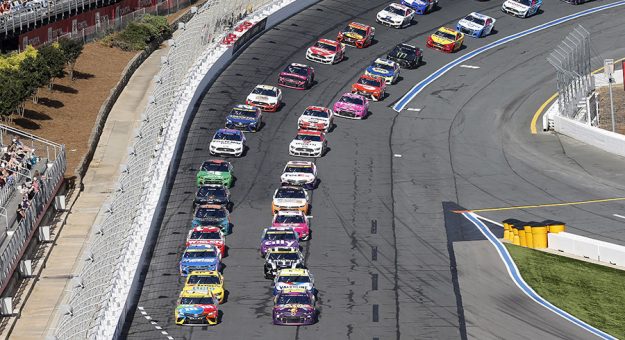WILMETTE, Ill. — The current racing season is winding down and this offseason will start the transition toward the next phase of team ownership.
This month, the Business of Speed looks at the factors influencing these moves and outlook going forward.
Motorsports on many levels has been an expensive proposition. Basically, spend what you can afford, then more. Money equals speed. Not the typical business rationale, but passion can impact the decision-making process.
Historically, there have been different ownership models for professional sports. Most are privately owned, but several have public ownership.
Many are legacy teams, where the family has owned the franchise for decades and select siblings have been involved in the front office and related positions.
This is most common in the NFL, where the league rules over ownership percentage, voting rights and leverage are designed for guidance where non-compliance results in heavy fines. The goal is to provide permanency where the average team value is more than $3 billion.
Racing has long been a family business. Time spent together prepping the car, traveling to the track and on pit road is the staple. Long hours were the norm and lofty expectations just part of the goal to reach the winner’s circle. Family legacies abound and are on display at numerous motorsports Halls of Fame.
Success breeds success and and motorsports is no exception. Business savvy is as important as being race savvy.
Many drivers also contemplate their futures beyond sitting in the cockpit.
Strong relationships with manufacturers and knowledgeable business advisers set a few of them up as owners of car dealerships. They are solid commercial pitchmen and, perhaps more importantly, great salesmen. The result is a solid addition to the driver’s investment portfolio.
Many drivers are involved in racing operations, in being part-owner of the team they drive for, or owning various other racing enterprises such as tracks, racing series, parts manufacturers or supply companies.
Professional team ownership is evolving in most sports, and racing is no exception. Many factors are at play.
The sanctioning bodies strive to make the playing field level — this is not easy. Cost containment is a major step.
Technology has evolved to such a point that the costs to participate far outweigh the benefits of doing so. It’s not a sustainable business model.
The establishment of the charter system in the NASCAR Cup Series has been important to team owners and potential team owners in that arena.
The goal was to provide stability and long-term value to existing team owners while providing a clear path for ownership.
The agreements outlined a system where q charter could be bought, sold or transferred on the open market.
The result has been the rise of smaller organizations with a limited number of charters becoming periodically available.
One early objective was also to limit multi-team ownership and the power of super teams over the rest of the starting grid.
Entering strategic partnerships with established teams shortened the learning curve for new teams. It also provided a reallocation of employment for a highly skilled workforce.
There has been a leveling off on the cost structure at the highest level of racing. Big budgets and sponsorship deals will continue to exist, though, in different manners than the past. Sponsorship has always been significant to the motorsports business model and always will be.
Traditional category partnerships remain involved. The interest from new areas with technology is unprecedented. It is necessary to connect with the ever-changing behavior patterns of the consumer.
The access to financial capital is positive. Money is available and the cost of entry for motorsports is favorable compared to the lofty asset value of other sports.
Signs indicate the timing is right for the next generation of race team owners, with taking the economic checkered flag the ultimate goal.
